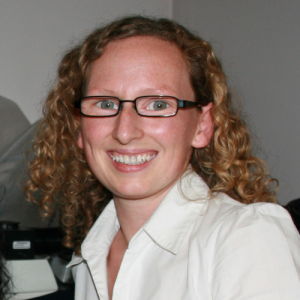
MS results from the loss of myelin, the insulating sheath around nerve fibres, in the brain and spinal cord. Myelin can be repaired, but in the progressive forms of MS, repair is not complete leading to irreversible disability. There are currently no treatment options that are capable of repairing myelin damage for people with progressive MS.
Associate Professor Young and her team have recently established that a non-invasive technique, known as repetitive transcranial magnetic stimulation (rTMS), is able to massage brain activity and increase the production of cells that produce myelin in the brain. In this project, Associate Professor Young will use this technology as a treatment in three different laboratory models of MS. She will test its ability to increase the production of the myelin producing cells, to re-wrap nerve fibres in myelin and promote lesion repair in the brain. Associate Professor Young will examine brain tissue under the microscope to determine effectiveness of this treatment in mediating successful repair of myelin and in combating disease progression in the models.
This type of magnetic stimulation is safe for human use and is already being used clinically for the treatment of other nervous system disorders. Therefore, it is hoped that a successful outcome from this project will allow it to be trialled in hospitals for the treatment of people with MS within a short time frame, providing a much-needed therapeutic option for progressive MS.
Over the course of this project, Associate Professor Young and her team aim to examine whether rTMS can induce cells to lay down new myelin and repair existing damage in three laboratory models of MS. One model has a single small focal lesion, the second is a model of low inflammatory MS and the third a model of highly inflammatory MS.
In initial findings, Associate Professor Young has shown that rTMS increases the number of new myelin producing cells added to the brain and spinal cord of laboratory models and the rate of myelination by increasing their survival. She has also looked at the impact rTMS has on existing myelin producing cells and found that the structure of myelin changes upon rTMS and learning, which both alter activity in the brain. This change has a significant impact on the speed of information transfer in the brain. It also has implications for understanding how myelin producing cells work in the healthy brain and how loss of myelin affects brain function.
Associate Professor Young has carried out rTMS on the models that have the single lesion, a large brain lesion with low-level inflammation and a large brain lesion with high-level inflammation. The last model is newly established for inflammatory MS that produces brain lesions in addition to spinal cord lesions. This means that it more closely resembles the pattern of lesions and myelin loss seen in people with MS. Associate Professor Young has examined the events that take place after demyelination occurs in these three models. She has found that demyelination in the model with the single lesion increased the generation of new myelin-producing cells that remyelinate the lesion, but this model did not experience outward symptoms of MS. Demyelination occurred in the model with the large brain lesion with low-level inflammation, which was repaired over time. Clear demyelination also occurred in the model with the large brain lesion with high-level inflammation, which was maintained over time, although the amount of precursor myelin-producing cells increased in response to the demyelination. Associate Professor Young is now in the process of determining whether rTMS enhances myelin repair in these models compared to the untreated models.
In an important step to be able to use rTMS in people with MS, Associate Professor Young has also determined the optimal rTMS method, which has been incorporated into the human rTMS safety clinical trial taking place in Tasmania. It is hoped that if these experiments are successful, rTMS may be used as a therapy to repair existing damage in progressive MS.
This exciting work has help leverage further funding. Associate Professor Young has received funding from the Ian Potter Foundation to purchase two new confocal microscopes that will double imaging capacity. She was also successful in receiving a collaborative NHMRC grant where she will help investigate the mechanism by which myelinating cells die with the aim of designing a treatment. She was one of the recipients of $10 million for the MS Flagship Program from Medical Research Future Fund. Associate Professor Young has also received $16,000 towards the clinical safety assessment of rTMS for the treatment of MS from the Royal Hobart Hospital Research Foundation.
Updated: 11 June 2020
Updated: 03 March, 2017

